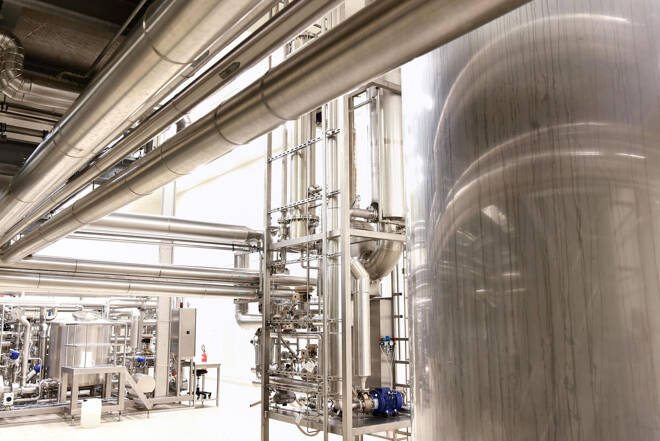Advertisement
Advertisement
German Industrial Production and Retail Sales Deliver Stress
By:
German industrial production and retail sales figures raise question marks over the ECB's more optimistic economic outlook. ECB President Lagarde up next.
It was another relatively busy start to the European session. The German economy was in the spotlight, with retail sales and industrial production figures in focus.
German industrial production increased by 3.5% in January versus a forecasted 1.4%. In December, industrial production slid by 3.1%.
According to Destatis,
- Production in industry excluding energy and construction rose by 1.9% in January.
- Strong growth in electronic equipment manufacturing (+7.1%) and the manufacture of chemicals & chemical products (+9.8%) delivered the positive headline figure.
- However, motor vehicle, trailers, & semi-trailer manufacturing slid by 5.2%, with the manufacture of basic pharmaceutical products and pharmaceutical preparations tumbling by 12.9%.
Manufacturing sector PMI numbers for January and February showed the German manufacturing sector in contraction at the turn of the year. However, factory orders rose unexpectedly in January, supporting a pickup in manufacturing sector activity.
While the pickup in factory orders and industrial production signals a more favorable economic outlook for Germany, the devil is in the details. The sharp decline in production across the auto and pharma sectors will be of concern.
German retail sales also disappointed. Retail sales decreased by 0.3% in January versus a forecasted 2.0% rise. Retail sales tumbled by 5.3% in December. The latest German retail sales will disappoint the ECB and question further the more optimistic economic outlook.
In the latest ECB Economic Bulletin, the ECB noted that rising wage growth and declining energy price inflation should ease the loss of purchasing power and support consumption. Today’s numbers questioned the theory.
EUR/USD Reaction to German Industrial Production and Retail Sales
Ahead of the economic indicators from Germany, the EUR/USD rose to an early high of $1.05563 before falling to a pre-stat low of $1.05244.
However, the EUR/USD responded to the stats from Germany, the EUR/USD fell to a low of $1.05336 before rising to a post-stat high of $1.05423.
At the time of writing, the EUR/USD was down 0.12% to $1.05370.
Next Up
Finalized euro area GDP numbers for Q4 will be in focus later this morning. However, the numbers are unlikely to have a material influence on the EUR/USD barring a revision from prelim numbers.
While the GDP numbers are unlikely to provide direction, ECB President Lagarde will draw interest. The ECB President will speak at a WTO International Women’s Day event. However, Lagarde will need to discuss policy goals for April to move the dial.
Looking ahead to the US session, it is a busier day on the US economic calendar. ADP nonfarm employment change numbers for February and the JOLTs Job Openings report for January will be in the spotlight.
Following Fed Chair Powell testimony from Tuesday, a solid set of numbers would support a 50-basis point Fed rate hike. However, investors should consider the second day of Powell testimony that will follow the labor market numbers.
About the Author
Bob Masonauthor
With over 28 years of experience in the financial industry, Bob has worked with various global rating agencies and multinational banks. Currently he is covering currencies, commodities, alternative asset classes and global equities, focusing mostly on European and Asian markets.
Did you find this article useful?
Latest news and analysis
Advertisement
